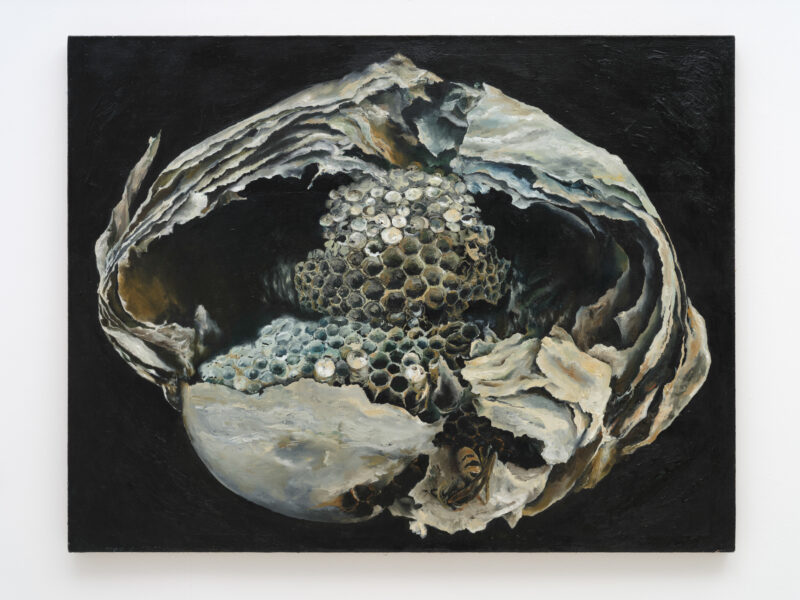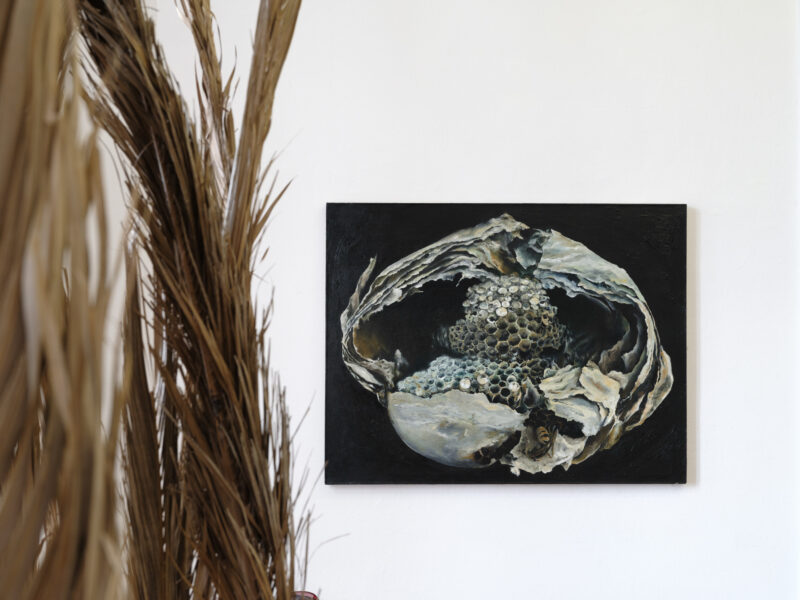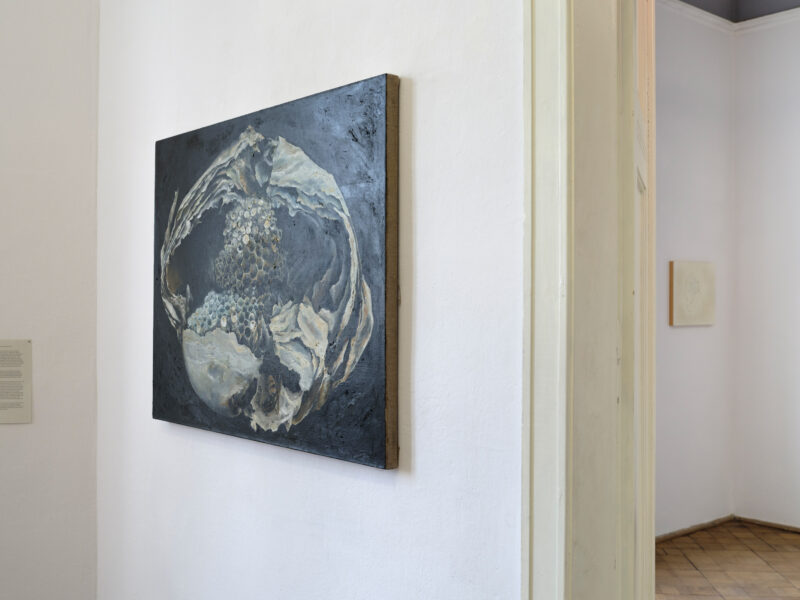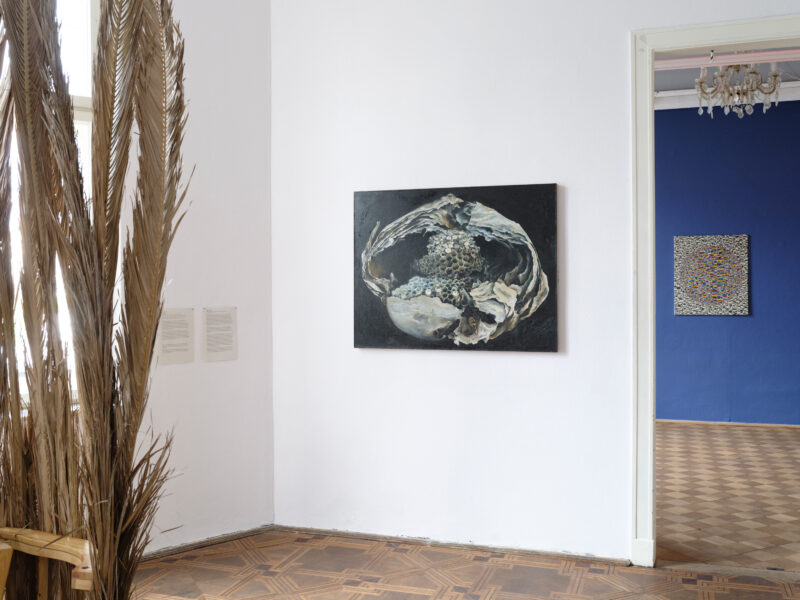Wasps’ Nest from the series Habitats
2024,
oil on canvas, 87cm(H) x 112cm(W)
lokal_30, Warsaw
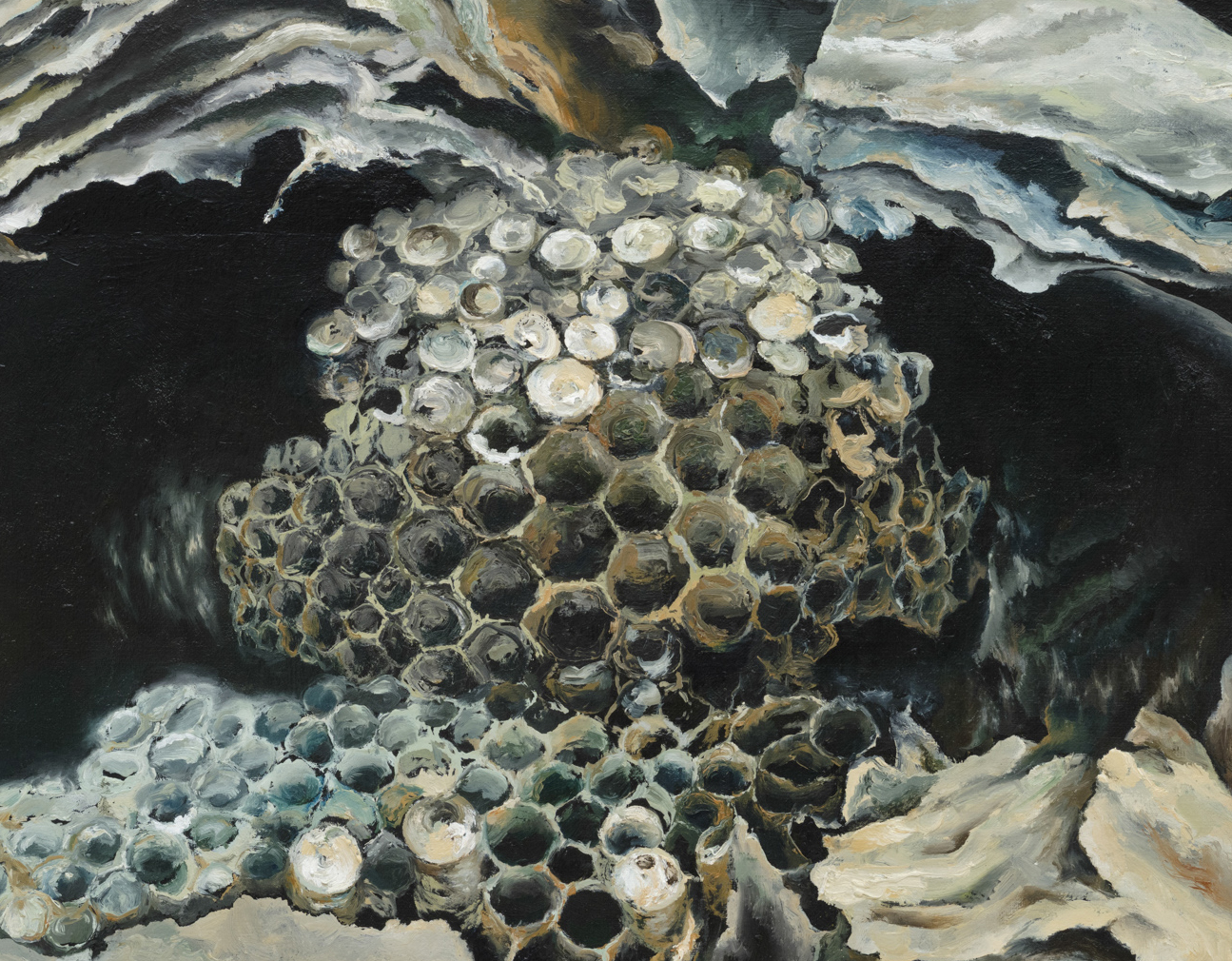
There are many wasps living near our house in Kuyavian-Pomeranian Voivodeship, which like to build nests there. The southwestern slope provides them with much warmth. In the letterbox, in the storage on the hill and in the small house where the salt core lives, we find nests every year, and sometimes they are really big.
These nests are places of safety, habitats where the entire life cycle of these insects takes place. The wasps build them from paper, which they make from dead wood and plant fibres, and sometimes from fresh wood and moss leaves. Chewing them with their mandibles, they mix them with saliva. Then they stretch a lump of moist paper pulp and give it the right thickness. They build their multi-story cylindrical blocks with intelligence and an extraordinary sense of architecture. It is not only warm and dry there, but also beautiful: the composition is governed by mathematical order, rhythm and symmetry, and the whole structure is perfectly proportioned. There is something incredible about a wasp habitat, something that makes you, as a human, want to become a larva under the care of the queen wasp or a worker. The small universe that wasps create for their offspring has something of a sci-fi novel.
You grow up in a hexagonal paper room, exactly your size. Above you, you have a lid that you will one day have the strength to open. And when you open it, you see that you are part of an exquisite, regular honeycomb on a stick, where each successive hexagonal room is filled with your siblings. It is cosy and safe. The sun shines very gently through the multi-layered spherical cocoon.
Such a surreal childhood should be had by every little one, both human and insect.
